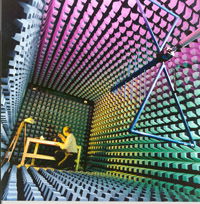An article covering this topic appeared in the ASTA BEAB Update - Summer 2005 Issue. This brief article provides an update:

Following the publication of the Recommendation and the issuing of Mandate M/305 to the European Standards Organisations, a number of standards have been developed for use in conjunction with 1999/519/EC and which can be used to demonstrate conformity with the safety objectives of the LVD and the Essential Requirements of the RTTED.
A manufacturer should only affix the CE marking to products covered by the LVD and RTTED once they have established conformity with 1999/519/EC. Because EMF is considered to be a requirement of the LVD and RTTED, it is considered that where a manufacturer chooses standards as the basis for their presumption of conformity with these Directives, then this presumption can only be complete if they have included consideration for EMF.
European Certification Bodies and Manufacturers' Associations have been working together to develop a three-level common approach to evaluate the conformity of apparatus with the relevant standard. This approach has now been agreed and is listed as a EEPCA CIG Decision D13/11. This was approved by the CIG on 25 April 2006, in Cologne.
The three level approach proposes:
- Where the apparatus has characteristics that are similar to other apparatus that have previously been evaluated by an expert and shown to be obviously benign then a declaration is made to this effect, referencing the source.
- For products where it is not known if it is benign, investigation should be carried out by an expert using the procedures outlined in the relevant generic or product specific standard. The expert should evaluate the product by examination of a sample and/or drawings and photographs or by comparison with a similar product that has been tested and found to conform with the EMF limit. If the expert concludes that the product is benign then no testing is necessary.
- If conformity is uncertain, then test work must be carried out within the procedures of the relevant generic or product specific standards.
Manufacturers of Household and similar electrical appliances are covered by a product-specific standard, EN50366:2003.
Generic standards:
Manufacturers of Audio Visual (AV) and IT products will need to make use of the generic standards, depending on the type and application of the apparatus:
- EN50392:2004 (0Hz - 300GHz), a generic standard that provides basic limits or reference levels on exposure to electromagnetic fields and induced and contact current.
- EN50371:2002 (10MHz - 300GHz) establishes a suitable standard to demonstrate the compliance of low power electronic and electrical apparatus.
- The Official Journal of the European Union lists EN50366:2003 (under LVD only) and EN50371:2002 (under LVD and RTTED). At the time of writing, EN50392:2004 is not yet listed as a harmonised standard.
Ultimately, responsibility for stating compliance with the requirements of the LVD, lies with the manufacturer. Where that manufacturer has chosen ASTA BEAB approval as a means of supporting the declaration of conformity, it is important to note that continued ASTA BEAB Approval may be conditional on successful completion of EMF testing. ASTA BEAB is conducting approval reviews on a wide range of domestic products as a result of the EC mandate . We provide a broad range of services in support of EMF compliance including testing, Certificates of Compliance and ASTA BEAB Approval.
Source - ASTA BEAB.
